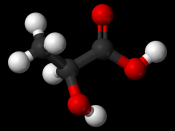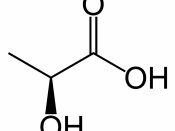Describe each of the energy systems
*ATP-CP (phosphogen) System
Stored at the myosin cross-bridges is broken down to release energy for contraction it is used for short bursts of energy - it is exhausted after about 10 seconds.
*Lactic Acid System
Carbohydrate is broken down anareobically (without oxygen) to lactic acid. This causes muscular fatigue. The energy released during this breakdown is used to re-synthesize A.T.P. Exercise performed at maximum rates for between one and three minutes depending heavily upon the lactic acid system for A.T.P energy.
*Oxygen System
Firstly uses glucose from either muscle tissue or from the liver and secondly breaks down fatty acids. The main fuel is glucose.
What is A.T.P
The Energy for muscle contraction which comes from the breakdown of a chemical compound named adenosine triphosphate (ATP)
Sources of ATP: Protein, Carbohydrates and Fats
How is A.T.P produced in each energy system?
a) A.T.P - C.P
ADP and the phosphate are converted back to A.T.P by the creatine phosphate (CP) when A.T.P is depleted.
b) Lactic Acid
Carbohydrate is broken down anareobically (without oxygen) to lactic acid.
The energy released during this breakdown is used to re-synthesize A.T.P.
c) Oxygen
What is the fuel source for each of the energy systems?
ATP-CP System -
Lactic Acid System - Glycogen
Oxygen System - Glucose, triglycerides
How are each of these fuels replenished?
a) Phosphagen
b) Anaerobic
c) Aerobic
What is the fuel stored for each energy system?
ATP-CP System - myosin cross-bridges
Lactic Acid System - glycogen
Oxygen System -
What is the time frame in which each energy operates?
ATP-CP System - Up to 10 Seconds, Short-duration activites
Lactic Acid System - 1 - 3 Minutes
Oxygen System - Long-duration activities
Explain the Anaerobic Threshold
The intensity of effort at which lactic acid accumulates. Usually...


